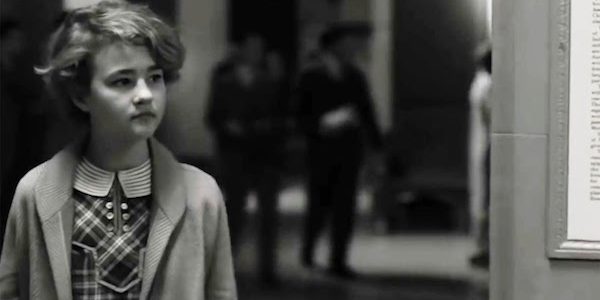
ReelBob: ‘Wonderstruck’ ★★★½
By Bob Bloom
“Wonderstruck” is a story of lost, found and discovery, driven by the performances of two talented young actors — Oakes Fegley as Ben and Millicent Simmonds as Rose.
The movie is a change for director Todd Haynes, whose previous efforts, such as “Carol” and “Far From Heaven,” have a darker tone than his newest feature.
The film, adapted by Brian Selznick from his novel, tells two parallel stories set 50 years apart — 1927 and 1977.
“Wonderstruck’s” charm is watching how the lines of the two stories slowly converge until they finally intersect.
The film opens in 1977 with Ben mourning the loss of his mother, Elaine  (Michelle Williams), the librarian in a rural Minnesota town, who was killed in a car accident.
(Michelle Williams), the librarian in a rural Minnesota town, who was killed in a car accident.
Ben has no memory of his father, and Elaine refused to tell her son about him.
In 1927, Rose, who is deaf and refuses to let that define her, lives with her strict father in Hoboken, N.J. Rose is obsessed with silent-screen star Lillian Mayhew (Julianne Moore).
Rose refuses to study books on lip reading and signing, despite the insistence of her father.
Seeing that Mayhew will be performing on stage in New York City, Rose runs away in hopes of meeting her idol.
Back in 1977, Ben finds a clue to his father’s identity, but before he can act upon it, an accident during an electrical storm renders him deaf.
Not allowing this setback to deter him, Ben takes his late mother’s rainy-day money and rides a bus to New York City to unravel the mystery of his birth.
The two stories slowly unwind — dropping bread crumbs of hints as they proceed — until their ultimate conclusion.
What makes “Wonderstruck” so compelling is not so much the stories, but how Haynes and his crew tell them.
The 1927 story is shot in black and white, with the only sound being Carter Burwell’s era-centric score — no sound effects, dialogue nor subtitles.
Still, you understand not only the events but Rose’s various emotions. That is a testament to young Simmonds performance. Her eyes and face convey a panorama of emotions that are easy to translate.
Edward Lachman’s cinematography is mostly various hues of grays, which help define the period.
In the 1977 scenes, Lachman’s palette explodes with bright, psychedelic colors that remind you of the funkiness of that time, and Burwell’s up-tempo score and song selections add to the flavor.
Affonso Goncalves’ editing at times resembles that of an old movie serial, as he cuts from one story to another just as a big revelation — that will advance each story — is forthcoming.
It would spoil the surprise and emotional wallop of the movie to reveal how the two stories flow, but they will neither disappoint nor feel contrived.
“Wonderstruck” doesn’t connect all its dots. Elaine’s refusal to tell Ben about his father seems more cinematic plot contrivance than necessary, but, overall, it’s an engaging and gentle story that is sincere and deserving to be experienced.
And you can share this with your kids, who will appreciate the loyalty, grit and determination of its young protagonists.
I am a member of the Indiana Film Journalists Association. My reviews appear at ReelBob (reelbob.com) and Rottentomatoes (www.rottentomatoes.com). I also review Blu-rays and DVDs. I can be reached by email at bobbloomjc@gmail.com or on Twitter @ReelBobBloom. Links to my reviews can be found on Facebook, Twitter, Google+ and LinkedIn.
WONDERSTRUCK
3½ stars out of 4
(PG), thematic elements, smoking